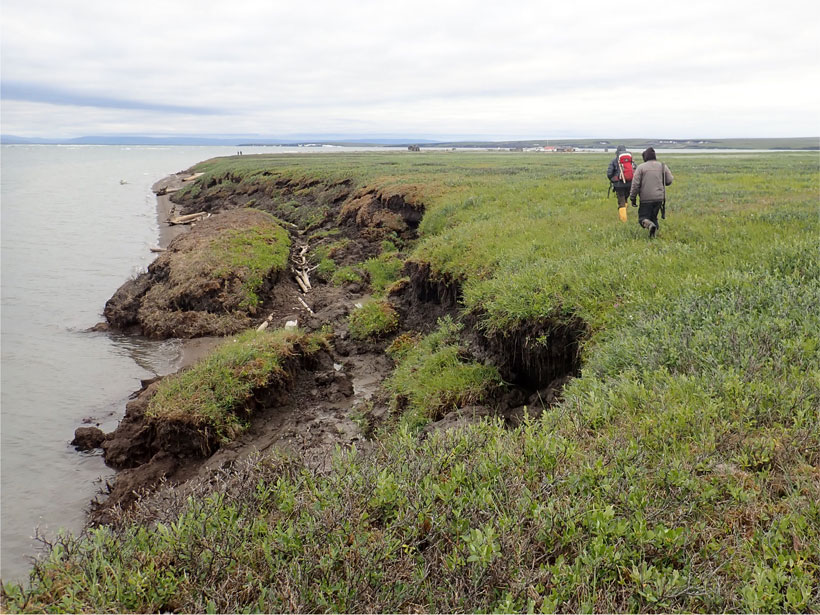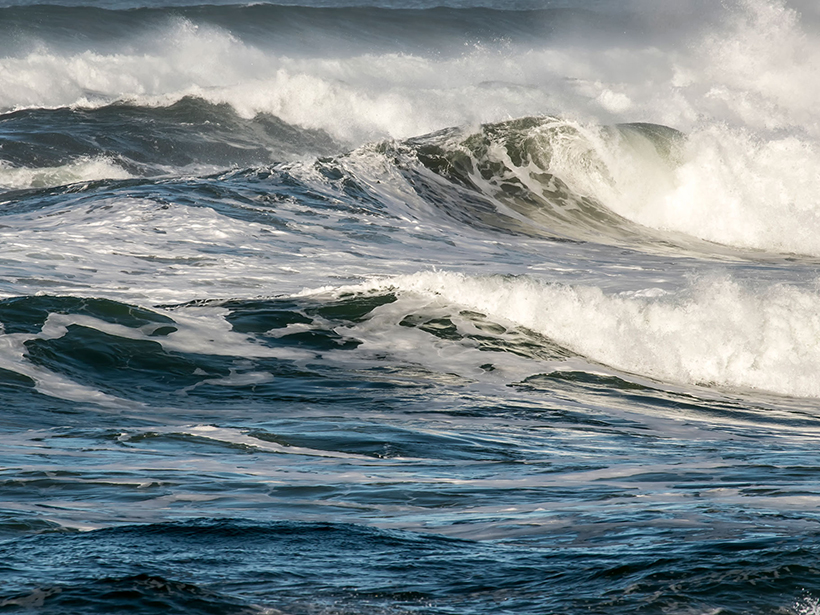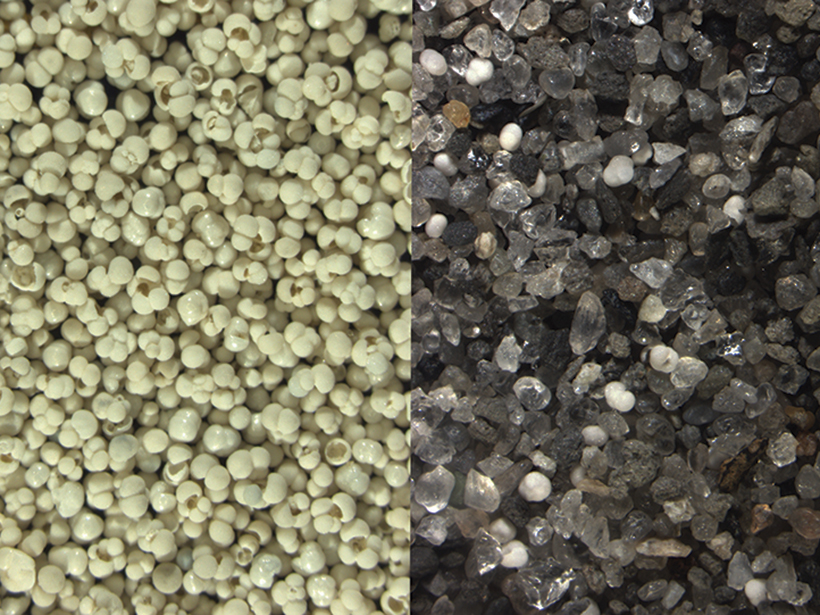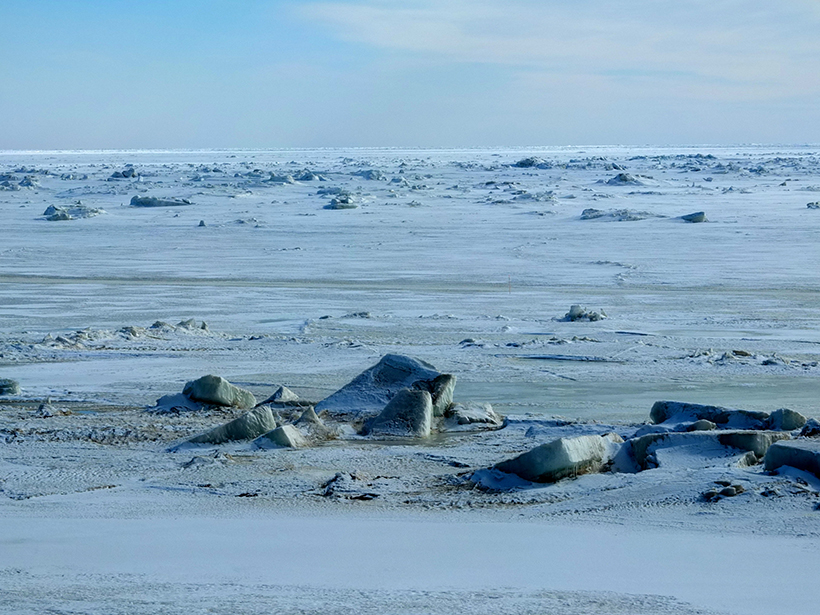Electrons energized and trapped at Mars were thought to lose energy inside the planet’s magnetosheath, but new research suggests a different explanation of spacecraft data.
Research Spotlights
Research spotlights are plain-language summaries of recent articles published in AGU’s suite of 24 journals.
Where Does the Carbon Go When Permafrost Coasts Erode?
Arctic coastlines have not been considered carefully in carbon cycles for long, but new research suggests that eroding permafrost may emit more greenhouse gases than previously thought.
Oceans Vented Carbon Dioxide During the Last Deglaciation
A new boron isotope record from South Pacific marine sediments offers a more complete picture of ocean-atmosphere carbon dioxide exchange during the late Pleistocene.
Earthquake Statistics Vary with Fault Size
A theoretical study explores why small earthquake sources can produce quasiperiodic sequences of identical events, whereas earthquakes on large faults are intrinsically more variable.
How Forest Structure Influences the Water Cycle
New research looks at how changes in the arrangement of trees and canopy thickness influence the transport of water from the land surface to the atmosphere.
Standardizing the Surge of Paleoclimate Data
Researchers unveil a community-wide effort to standardize terminology and reporting requirements across paleoclimate data.
How Are Microplastics Transported to Polar Regions?
New modeling indicates that global subsurface ocean currents distribute submerged microplastics along very different routes than those traveled by floating plastic debris.
Atlantic Circulation Consistently Tied to Carbon Dioxide
Past ocean surface conditions suggest that over the past 800,000 years, atmospheric carbon dioxide levels typically rose on millennial timescales when Atlantic overturning was weaker and vice versa.
Distant Quake Triggered Slow Slip on Southern San Andreas
A high-resolution map of surface displacements indicates that the 2017 Chiapas earthquake caused substantial creep along a segment of the San Andreas Fault, located 3,000 kilometers away.
As Arctic Sea Ice Disappears, What Happens to Ecosystems?
The northern Bering Sea is experiencing record-setting low winter sea ice levels, which are impacting plankton, fish, and other animals in the region.










